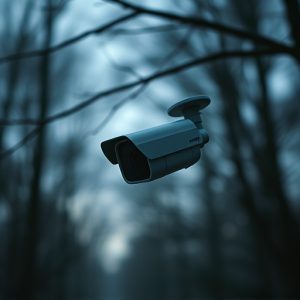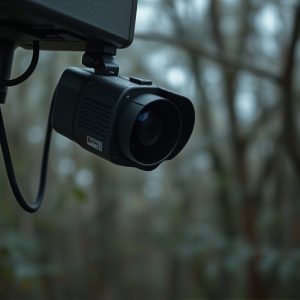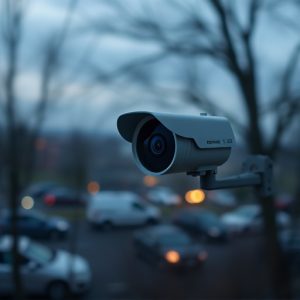Counter Surveillance Sweep: Detecting Small Hidden Cameras in Bedrooms
Detecting small hidden cameras in bedrooms requires advanced techniques like thermal imaging, traine…….
Detecting small hidden cameras in bedrooms requires advanced techniques like thermal imaging, trained eyes, magnetic detectors, and RF signal finders. A systematic sweep involves physical inspection, removing furniture, checking hard-to-reach areas from the ceiling down, disassembling beds, and scrutinizing wall outlets, switches, and fixtures. Meticulous analysis using specialized equipment compares findings with databases to identify and categorize surveillance devices, ensuring no trace of unauthorized monitoring is missed, crucial for legal cases involving privacy breaches in sensitive areas like bedrooms.
Counter surveillance is a critical skill in today’s digital age, especially when confronting the insidious threat of small hidden cameras. This comprehensive guide equips professionals with proven methods to detect and dismantle these covert devices, focusing on bedroom inspections. From advanced techniques and specialized tools for identifying hidden cameras to meticulous sweep strategies, this article offers a step-by-step approach to ensuring comprehensive coverage. Master these tactics to protect sensitive spaces from prying eyes.
- Detecting Small Hidden Cameras: Techniques and Tools
- Physical Inspection: Sweep Methods for Bedrooms
- Post-Sweep Analysis: Ensuring Comprehensive Coverage
Detecting Small Hidden Cameras: Techniques and Tools
Detecting small hidden cameras, often referred to as “bedroom spy cameras,” requires a combination of advanced techniques and specialized tools. Professionals employ thermal imaging technology to identify heat signatures that might indicate the presence of concealed cameras. These devices can detect even the tiniest sources of heat, making them invaluable in locating miniature cameras hidden behind walls or within everyday objects. Additionally, expert eyes are trained to recognize subtle anomalies like irregular patterns on surfaces, which could suggest a camera lens’ location.
Magnetic detectors and radio frequency (RF) signal finders are other powerful tools. Magnets can be used to locate metal components in hidden cameras, while RF signal finders pick up electromagnetic emissions from active devices. By sweeping through areas suspected of housing small hidden cameras, these techniques provide a thorough and systematic approach to counter surveillance.
Physical Inspection: Sweep Methods for Bedrooms
When conducting a counter surveillance sweep, focusing on bedrooms is crucial as they often house small hidden cameras designed to invade privacy. A thorough physical inspection is the first line of defense. Start by removing all furniture and checking behind and under it for any suspicious devices or tampering signs. Pay close attention to wall outlets, switches, and light fixtures—common places for covert surveillance equipment. Use specialized tools like flashlights with adjustable focus and magnification to inspect hard-to-reach areas.
For a complete sweep, employ the “top-down” method, starting from the ceiling down. Check for any unusual wiring or newly installed devices that might indicate hidden cameras. Remove wall art and check the back of pictures for covert sensors or microcameras. Bed frames, mattresses, and pillows can also hide small cameras, so disassemble them if necessary. Look for any signs of tampering or recent activity that could suggest an active surveillance system in the bedroom.
Post-Sweep Analysis: Ensuring Comprehensive Coverage
After completing a counter surveillance sweep, thorough analysis is crucial to ensure that no hidden cameras, such as small bedroom cameras, have been missed. This involves systematically reviewing all areas covered during the sweep, including walls, corners, and any possible hiding spots for covert recording devices. Professionals use specialized equipment to detect even the smallest hidden cameras, employing advanced technologies like thermal imaging and infrared sensors.
By cross-referencing the sweep results with a comprehensive database of known surveillance equipment, experts can identify and categorize any detected devices. This analysis stage is vital to guarantee that no trace of unauthorized monitoring remains undetected. It also provides valuable insights into the extent and nature of the surveillance setup, which can be crucial for legal proceedings or identifying perpetrators in cases involving privacy breaches, especially concerning sensitive areas like bedrooms.
In the fight against covert surveillance, especially with the proliferation of small hidden cameras in bedrooms, professionals must stay ahead. This guide has equipped you with powerful techniques and tools for detecting such devices, along with effective sweep methods tailored to intimate spaces like bedrooms. Remember that thorough post-sweep analysis is key to ensuring comprehensive coverage, allowing you to provide a safe and secure environment for your clients. By combining these professional methods, you can effectively navigate the complex landscape of counter surveillance, providing peace of mind in today’s digital age.


